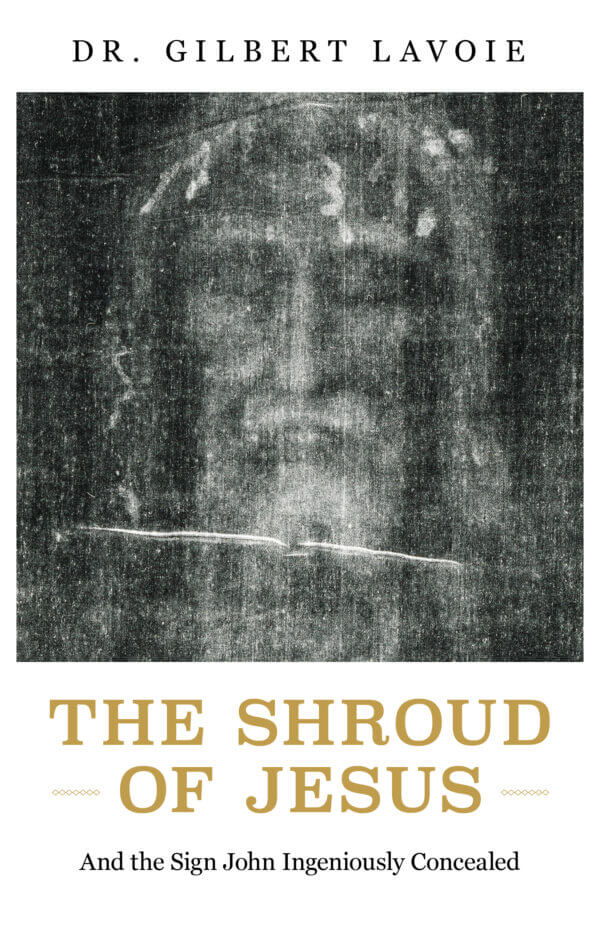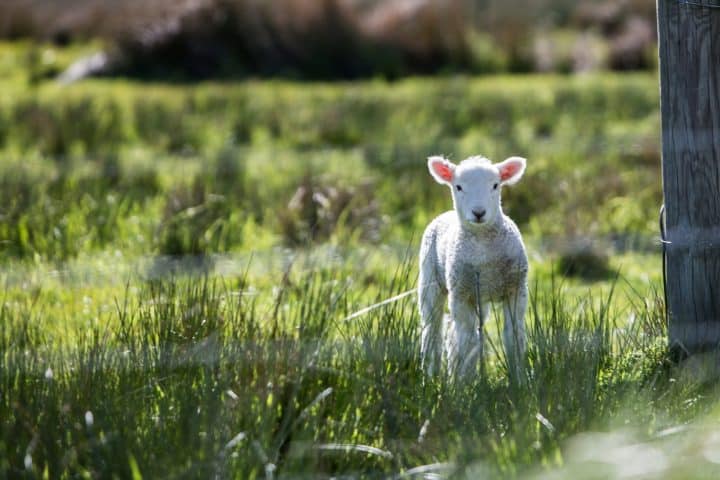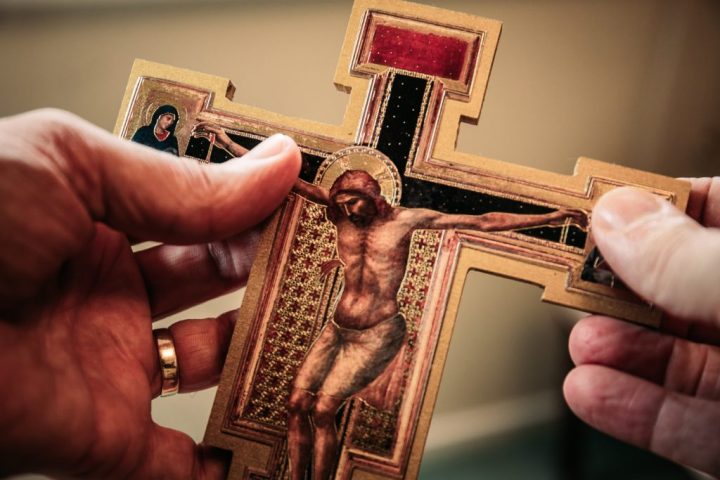The Shroud of Turin is a linen cloth approximately 14 feet by 3.5 feet that shows the front and back of the body of a naked man. It also carries blood marks that are consistent with the scourging and crucifixion of Jesus of Nazareth as described in the Gospel of John. From a forensic perspective, the blood marks of the shroud are consistent with that of a man who died in the crucified position. Many believe that this is the shroud of Jesus.
The man was taken down from the position of crucifixion and placed supine on one end of this long burial cloth. The other end was then draped over his body. All current sculptures of the image of the shroud show the man lying on his back. Indeed, the blood marks are consistent with a man who had been laid out in burial.
I also believed that the body was supine. Until one day, during my study of certain blood marks, I accidentally discovered new evidence about the image of the man of the shroud. As I looked over the frontal image of the shroud, I suddenly became aware of the obvious: The hair flows down on both sides of the face to the shoulders following the force of gravity. Looking at the back image, I could see that the same was true. The hair flows over the shoulders and down the back and is totally consistent with that of an upright man. (figure 1).
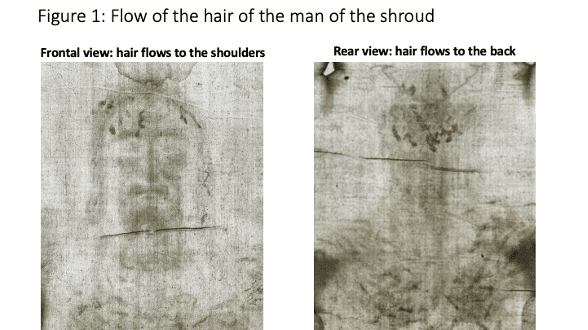
To best demonstrate these findings, I compared a volunteer with long hair to the hair flow of the shroud image. Figures 2 and 3 tell the story. They are the negative images of the front and back of an upright volunteer with long hair. The hair falls along the sides of the face to the shoulders and down the back. The hair of these images is consistent with that of the shroud (figures 2, 3). The next figure (figure 4) is the negative image of the same volunteer in the supine position. The hair falls backward rather than to the shoulders. It is simple enough. Long hair responds to gravitational force and takes on a typical appearance that is familiar to everyone. The hair of the man of the shroud is that of a man who is upright.
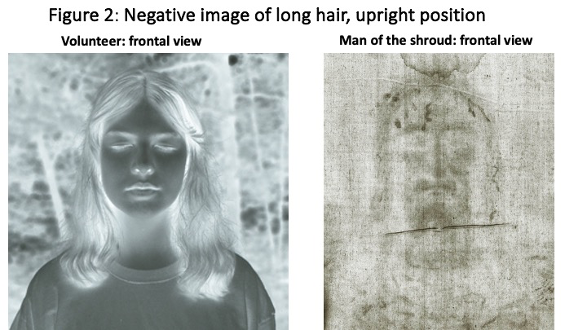
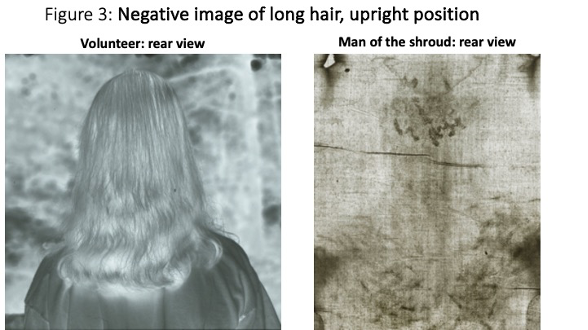
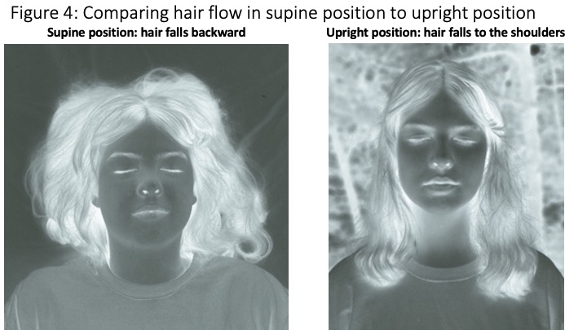
Again, the key concept is gravity. Gravity plays a major role in determining not only how the hair falls but also how the body looks in the upright position verses the supine position. This is especially true regarding the anatomical form of the back of the body. During my years in the practice of medicine, I have been, on occasion, in the autopsy room of the hospital. As anyone would observe, the back of a supine corpse is markedly flattened due to the weight of the body; the pressure of the body weight in the supine position flattens the back, buttocks, and legs. This is also true of the living while in the supine position.
The best way to fully appreciate how gravity affects the back in the supine position is to visualize it. See the drawings (created by a professional artist) of the back of a naked man. The first drawing is the anatomical form of the back of a man who is standing (figure 5). The second drawing was done after the same man lay on his back (supine position) on a plate of glass with the artist looking up at him from below (figure 6). Note the way his hair falls backward and is flattened out on the glass. Also note the flattening of the anatomical form of his back, buttocks, and lower legs. This is what one sees in an autopsy room when turning over a corpse who has been laid out in the supine position. This same flattened anatomical form is the one that we would expect to see when looking at the back image of the man of the shroud who had also been laid out in the supine position in burial. But that is not what we see. Rather, we see the anatomical form of a man who is in the upright position, because his form is similar to the form of the man who is standing upright (figure 5). Therefore, the falling hair and the anatomical form of the back of the man of the shroud (figure 7) is that of a man who is upright.
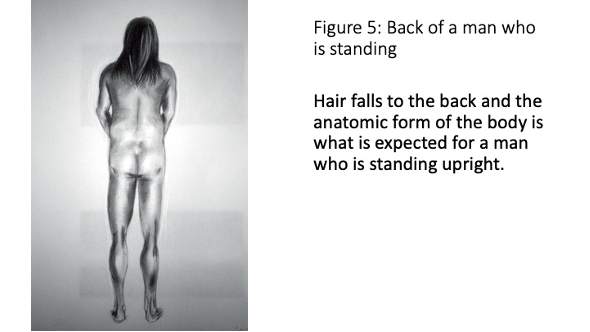
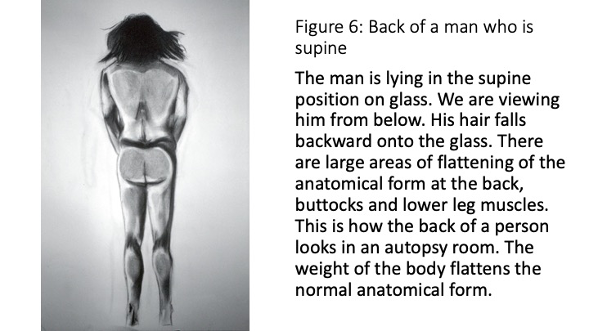
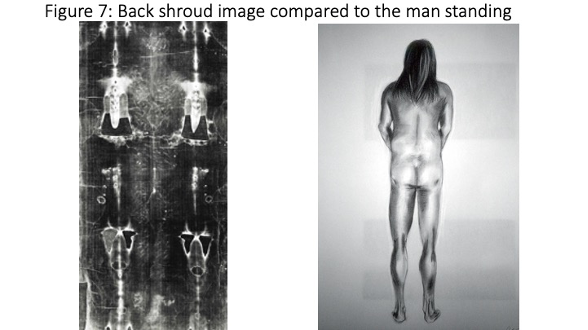
Looking at the image of the crossed feet, the man is not standing. The image of the man of the shroud is not lying down in burial but is upright as if suspended in midair (figure 8).
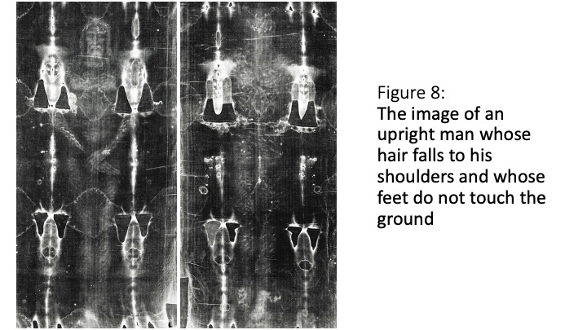
I must admit that I was overwhelmed with the discovery of the upright man. It caused me to back out of the room in awe and respect for what the image of the man of the shroud was visually telling me. My first thought was that indeed this image is a reflection of the moment of Jesus’ resurrection. It was a moment in direct contrast from all that I previously understood. Prior to that moment, I thought there was nothing on the shroud that revealed that this man’s image was a reflection of Jesus’ resurrection.
In the context of what I knew of Jesus’ life, the image of the upright man that I now saw was a visual declaration of his resurrection. But as I calmed down from my initial moment of awe, questions were screaming inside my head: “He is upright, but why isn’t he standing?” “Why is he in midair?” I had no answers and did not know where to find them. Then one source came to mind. I went to the Bible and read the four Gospels.
So I began a biblical search for answers as to why the image of the shroud shows a man whose hair falls to his shoulders and whose feet do not touch the ground. And that was the beginning of an exhilarating biblical journey. That journey opened the door to discovering the sign that John ingeniously concealed and much more. That journey also brought me to Pablo Eduardo, a master of artistic anatomy. The result is a new sculpture of the man of the shroud that now resides at Ave Maria University. This sculpture of the man of the shroud, called The Sign, visually shows that Jesus is not lying in burial but is raised up, lifted up in resurrection and ascension to his Father (figure 9).
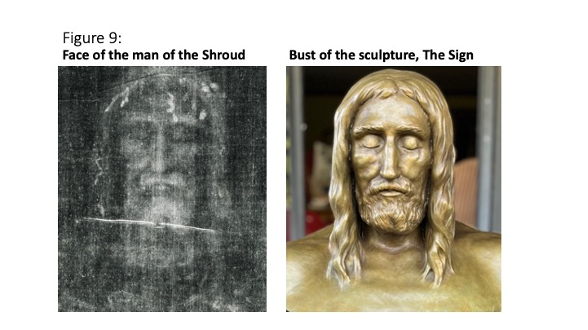
The Shroud of Jesus is available from Sophia Institute Press.

